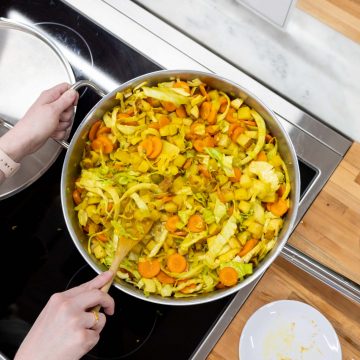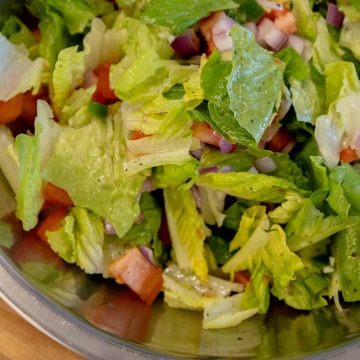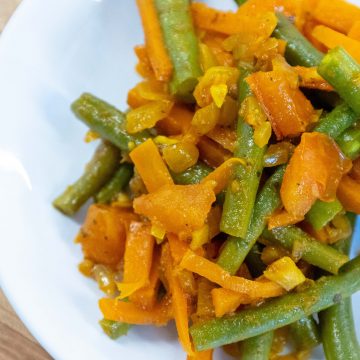Ingredients
- 1 Tablespoon oil
- 2 medium zucchini and/or yellow zucchini, peeled into thin strips
- 2 large carrots, peeled into thin strips or grated
- 1/2 teaspoon garlic powder
- 2 Tablespoons red curry paste (or 1 teaspoon curry powder)
- 1 Tablespoon low sodium soy sauce
- 1 – 15 oz can light coconut milk
- 32 ounces low sodium chicken or veggie stock
- 2 cups water
- 6 ounces thin noodles of choice (thin rice noodles, ramen, or Capellini)
- Juice of one lime
- 1/2 bunch cilantro leaves, snipped
- 1/2 bunch scallion onion, snipped
Directions
- Heat the oil in a large soup pot over medium high heat. Sauté the zucchini and/or yellow squash and carrots for 1-2 minutes, just to soften them slightly.
- Add the garlic powder and curry paste (or curry powder) and stir for about 30 seconds to help season the vegetables.
- Add the soy sauce, coconut milk, stock, and water. Cover and bring the liquid to a boil, about 3-5 minutes. Once the liquid is boiling, add the noodles, reduce the heat to low, and partially cover the pot.
- Simmer until the noodles are done (check the packaging, this could take anywhere from 2-10 minutes).
- While the soup is simmering, use kitchen scissors to snip the cilantro and scallion onions into bite sized pieces to use as a garnish.
- Once vegetables and noodles are tender, stir in lime juice*. Top with cilantro and scallion onions, and serve.
*To juice a lime (or other citrus fruit) without a knife, roll your lime on a cutting board or the counter to loosen up the membranes. Then by using a skewer, chopsticks, toothpick, or a pin (get creative!) poke a hole in the non-stem end of the lime. Squeeze out the juice, it’s amazing how much comes out!
@vetricommunity
Follow us on social media for recipes, resources and the latest VCP news!
Follow us on Instagram






